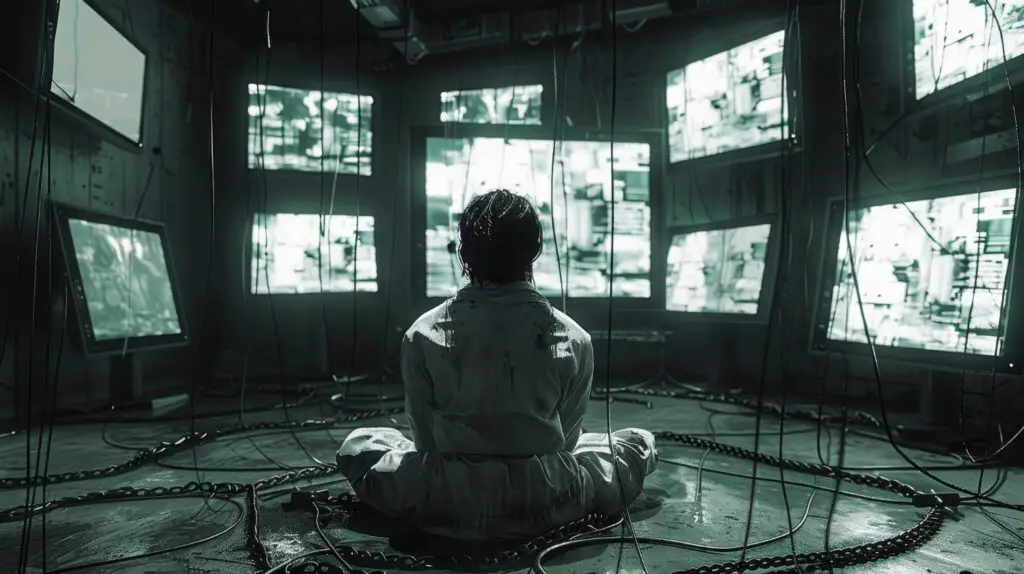At exactly 3:14 a.m., every terminal at CyverTech Corp—the largest private cybersecurity firm in the U.S.—flashed red.
“Breach Detected – Tier 1 Firewall Compromised.”
No alerts. No external signal. No trace of the intrusion. Just a sudden spike in internal bandwidth, and one thing left behind: a file titled “HELLO_FROM_ZERO.”
Inside the file: nothing. No code. No malware. Just a simple animated message:
“When justice is outsourced to machines, only ghosts will fight back.”
It was the signature of someone long believed to be a myth—Zero, the most infamous hacker the cybersecurity world had ever known.
Six years ago, Zero brought down an illegal offshore banking network, erasing $18 million tied to crime syndicates. Then, two years later, they silently disabled a U.S. drone operation mid-flight during a live exercise, exposing security flaws no one wanted to admit. But after that—disappearance. No traces, no hacks, no data leaks. Until now.
The breach had reached CyverTech’s most sensitive archive: a classified AI protocol designed to scan, score, and report on individuals based solely on their biometric and online behavioral data. Known internally as Project SENTRY, the system was set to launch globally within months. The company marketed it as “next-gen digital security.” But not even CyverTech’s employees were aware of what it was truly capable of.
Maya Lin, the firm’s top threat analyst, began combing through the breach logs. What she discovered shook her: Zero hadn’t stolen anything—they’d planted something.
The line of code they left behind wasn’t destructive—it was corrective. It quietly dismantled a backdoor that allowed third-party agencies to use SENTRY’s AI for predictive surveillance on civilians. The code rewrote itself, sealed the breach, and locked the exploit permanently. Then it deleted itself.
It was as if Zero had broken in just to close a door that never should have been opened.
Curious and increasingly disturbed, Maya traced fragments of the digital fingerprint. Most relays were untouchable, routed through black-market networks and satellite pings. But one lead slipped through: a ghosted social handle—@zerotraceX—that hadn’t been active in years. It had one cryptic pinned post:
“Data is power. Power without consent is control.”
Determined to understand who—or what—Zero really was, Maya reached out to a darknet broker with access to digital whistleblower communities. After a hefty crypto payment, she received coordinates. Berlin.
She took personal leave and flew there alone.
In a quiet café in Kreuzberg, she met a man in his late 30s wearing a faded hoodie and glasses with cracked frames. No name. No introduction. But when he spoke, his words struck like a command line.
“You’re not just here to stop something dangerous,” he said. “You’re part of it. Every line of code you’ve touched, every AI you’ve trained—it’s all part of the machine. You want to stop it? You’ll have to break more than firewalls.”
Maya sat in silence.
Zero smiled, handed her a small hard drive, and stood to leave.
“No such thing as deleting a ghost. But sometimes, you can give it a better reason to haunt.”
When she returned to the States, the drive contained detailed logs—evidence of CyverTech’s illegal data deals, documents showing governments using the AI to pre-emptively detain individuals, and worst of all, simulations predicting how society could be shaped by manufactured “risk profiles.”
Maya went public.
She leaked the data anonymously. Investigations launched. CyverTech denied everything. Stock prices crashed. Whistleblower protections were debated in Congress. But Zero was never seen again.
To this day, no one knows where the breach came from, who Zero really is, or what else they’ve already seen.
All anyone knows is this:
If the system watches you—
Someone is still watching it.



